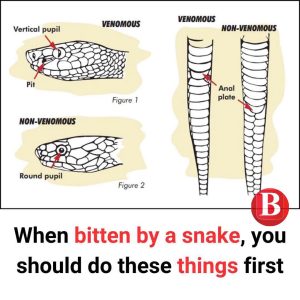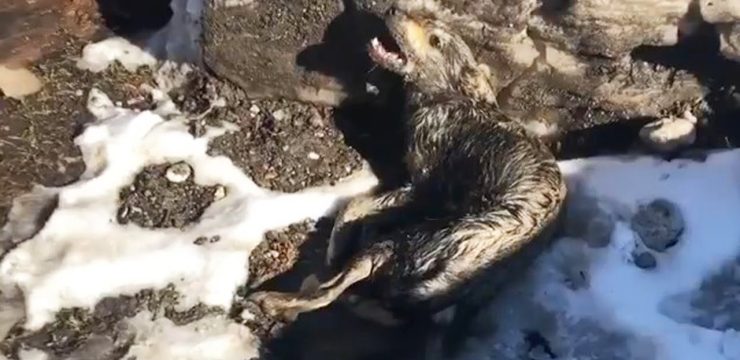The thought of being bitten by a snake can instantly send a wave of panic through anyone. It’s a terrifying scenario that feels like something straight out of a wilderness survival movie. But before you start channeling your inner cowboy and thinking about cutting the wound or sucking out venom like they do in old Westerns—don’t. That’s not only outdated advice, but it could also make the situation worse. If you ever find yourself—or someone else—bitten by a snake, knowing the correct steps to take could be the difference between recovery and a life-threatening emergency.

While most snakes are harmless, and snake bites in the United States are rarely fatal, there are still dangerous species that can cause serious harm. According to the Mayo Clinic, about 20% of snakes in the U.S. are venomous. Understanding which ones pose a threat, the symptoms to watch out for, and what actions to take is vital.
The most common venomous snakes in North America include rattlesnakes, copperheads, cottonmouths (also called water moccasins), and coral snakes. Most of these venomous snakes are part of the pit viper family. You can often identify a pit viper by its distinct triangular-shaped head, vertical slit-like pupils, heat-sensing pits between the eyes and nostrils, and of course, fangs. Coral snakes, on the other hand, look quite different. With round pupils, a blunt head, and brightly colored red, yellow, and black bands, they’re often mistaken for harmless species—but their venom is especially dangerous.
Most snake bites in the U.S. occur on the arms, wrists, or hands, often because someone accidentally gets too close or reaches where they shouldn’t. If the snake is nonvenomous, consider yourself lucky. These bites are usually more frightening than harmful. You might feel some stinging or pain, notice scratches or puncture marks, and see a little swelling or redness. While it’s still important to clean and monitor the wound, the consequences are usually mild and manageable.
Things get much more serious if the snake is venomous. A bite from one of these snakes can cause intense pain almost immediately. The pain may radiate outward and worsen over time. Swelling, bruising, and discoloration often spread well beyond the bite area. According to the Mayo Clinic, other symptoms may include nausea, difficulty breathing, dizziness, weakness, and even a strange metallic taste in the mouth. Some bites can affect your entire body and, if not treated quickly, lead to life-threatening complications.
Coral snakes present a particularly dangerous risk because of the type of venom they carry. Rather than damaging tissue like pit vipers do, coral snake venom targets the nervous system. This can lead to symptoms such as drooping eyelids, a tingling sensation in the fingers or toes, muscle weakness, trouble swallowing, and eventually paralysis. These symptoms may not appear immediately but can progress rapidly, so emergency care is absolutely critical.
It’s also worth mentioning the phenomenon known as a “dry bite.” This occurs when a venomous snake strikes but doesn’t inject any venom. It’s still serious and should be treated like any other bite because there’s no way to be certain how much venom was delivered—or if any was at all—without medical evaluation.
Understanding these differences and recognizing the symptoms early on can play a huge role in saving a life. As the American Red Cross points out, most deaths from venomous bites happen not because of the bite itself, but due to delayed medical care, allergic reactions, or pre-existing health conditions.
So, what should you do if you’re bitten by a snake?
First, try to stay calm. Easier said than done, of course, but keeping calm can help slow your heart rate and reduce the spread of venom throughout your body. Then, call emergency services immediately. Dial 911 or get to the nearest hospital as quickly and safely as possible. Don’t waste time trying to treat the bite yourself—professional medical care is essential.
While waiting for help, keep the affected limb still and lower than the level of your heart. This helps slow venom movement. If you have a splint or sling, use it to immobilize the area. Remove rings, watches, or any tight clothing near the bite site, since swelling can happen quickly and restrict blood flow.
If you can do so safely, try to remember the snake’s color, size, and markings. Better yet, take a photo if possible. This information can help doctors identify the species and select the most effective antivenom. But don’t risk another bite by trying to capture or kill the snake—just get to safety.
Just as important as knowing what to do is knowing what not to do. Forget what you’ve seen in movies. Do not try to suck out the venom—it doesn’t work and can damage the tissue further. Don’t make any cuts around the bite, apply ice, or use a tourniquet. These can all do more harm than good. And definitely don’t waste time chasing or killing the snake. The priority is getting help, not playing hero.
While snake bites are scary, the good news is that with the right actions, recovery is very likely. Medical treatments have come a long way, and fatalities are rare when care is administered quickly. It’s also worth remembering that snakes don’t usually go looking for a fight. Most would rather slither away and be left alone. Bites typically happen because the snake was startled or felt threatened.
Being prepared and educated can make all the difference. If you spend time hiking, gardening, or exploring areas where snakes are common, it’s smart to wear boots and long pants, avoid reaching blindly into brush or logs, and keep an eye on where you step. Simple precautions can reduce your risk and help you enjoy the outdoors more safely.
Finally, don’t keep this information to yourself. Share it with your friends, your family, and anyone who might benefit. The next time someone asks, “What should I do if I get bitten by a snake?”—you’ll have the answer. And it just might save a life.





